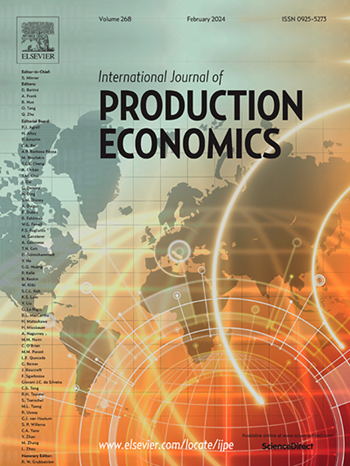Circular economy challenges under uncertainty in the Indonesian fashion industry: A causal hierarchical model
IF 10
1区 工程技术
Q1 ENGINEERING, INDUSTRIAL
引用次数: 0
Abstract
This study provides insights into the circular economy challenges in the Indonesian fashion industry and builds a hierarchical model under causality relations among the proposed challenges’ attributes. However, the Indonesian fashion industry imposes many challenges in addressing environmental and social concerns. This study aims to assess the partition challenges of the fashion industry to establish a new approach to developing a hierarchical model. A hybrid methodology is proposed. (1) The fuzzy Delphi method is used to establish a valid set of circular economy challenges; (2) the fuzzy decision-making test and evaluation laboratory are used to assess the causal relationships among the different attributes to determine the challenges; and (3) the analytic network process can assess hierarchical interdependencies among the attributes. The results show that waste management barriers and standard and regulation challenges are the main causal attributes. The challenges in the Indonesian fashion industry include inadequate waste management infrastructure, a lack of regulatory pressure on waste management, unstandardized circular economy measurements and the high dependability on third-party waste pickers.
印尼时装业不确定性下的循环经济挑战:因果层次模型
本研究深入分析了印尼时装业面临的循环经济挑战,并在挑战属性之间建立了因果关系的层次模型。然而,印尼时装业在解决环境和社会问题方面面临许多挑战。本研究旨在评估时尚产业的分割挑战,以建立一个新的方法来开发层次模型。提出了一种混合方法。(1)采用模糊德尔菲法建立了一套有效的循环经济挑战;(2)利用模糊决策测试与评价实验室对不同属性之间的因果关系进行评价,确定挑战;(3)分析网络过程可以评估属性之间的层次相互依赖关系。结果表明,废物管理障碍和标准法规挑战是主要的原因属性。印尼时装业面临的挑战包括废物管理基础设施不足、对废物管理缺乏监管压力、循环经济衡量标准不标准化以及对第三方废物收集者的高度可靠性。
本文章由计算机程序翻译,如有差异,请以英文原文为准。
求助全文
约1分钟内获得全文
求助全文
来源期刊
CiteScore
21.40
自引率
7.50%
发文量
266
审稿时长
52 days
期刊介绍:
The International Journal of Production Economics focuses on the interface between engineering and management. It covers all aspects of manufacturing and process industries, as well as production in general. The journal is interdisciplinary, considering activities throughout the product life cycle and material flow cycle. It aims to disseminate knowledge for improving industrial practice and strengthening the theoretical base for decision making. The journal serves as a forum for exchanging ideas and presenting new developments in theory and application, combining academic standards with practical value for industrial applications.

 求助内容:
求助内容: 应助结果提醒方式:
应助结果提醒方式:


